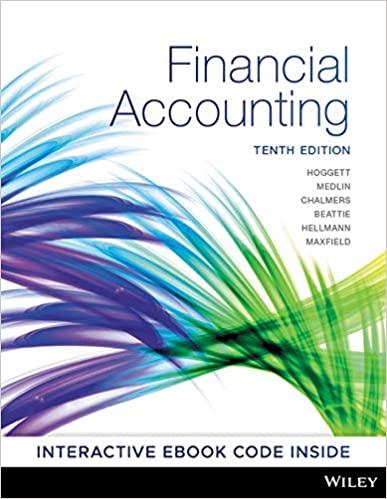Read the article below and answer the questions that follow. Charitable organisations by definition aim to do
Question:
Read the article below and answer the questions that follow.
Charitable organisations by definition aim to do good with the money they receive and spend. But what about the investments they make? What if these investments don’t appear to match the aims that the organisation promotes? For example, a charity that promotes conservation would raise eyebrows if they invested and received returns from an oil company. Some charities have come under particular scrutiny for this mismatch, while others have faced calls to divest their money from uncomfortable concerns.
Others use ethical investing as a guide.
Ethical or Socially Responsible Investment (SRI), sometimes also referred to as sustainable investment, is about taking steps to ensure that an organisation’s investments reflect its values and ethos and do not run counter to its aims. This kind of investment takes environmental, social, ethical and governance factors into consideration and is based on achieving the greatest impact from investments by both pursuing maximum financial return and ensuring investments complement, rather than undermine, the wider aims of the organisation. There is no one-size-fits-all model for how to do this — instead, there are a number of approaches that can be used separately or in combination.
Three ways to do it
Positive screening involves selecting companies for investment that have a commitment to responsible business practices and/or that produce positive products or services. This approach can include selecting companies whose products help to combat climate change, such as technologies for generating renewable energy. Positive screening can also mean selecting only the best performers in a sector on a range of criteria such as their record on human rights or pollution.
Negative screening excludes companies or sectors that do not meet the ethical criteria that a charity has set. For example, a health charity not wishing to invest in the tobacco industry.
Engagement, or shareholder activism, is using the influence and rights of ownership to encourage more responsible business practices. This mainly takes the form of dialogue, but it can also extend to using voting rights to enact change.
Legal obligations for charities
Charity trustees are responsible for making investment decisions and are required under charity law and guidance from the Charity Commission (CC14) to do what is in the best interests of the organisation.
Generally speaking, this means maximising financial return; however, CC14 allows an organisation to choose to take a lower rate of return if: a particular investment conflicts with the aims of the organisation; the organisation may lose supporters if it does not invest ethically; or there is no significant financial detriment.
Those responsible for the investments must clearly articulate why certain companies or sectors are excluded or included. With their professional advisers, trustees should also evaluate the effect of any proposed policy on potential returns and balance any risk of lower returns against the risk of alienating support or damaging its reputation.
Required
(a) Describe the difference between ethical investment and social impact investment.
(b) Given the fiduciary maximisation duty, explain if cancer charities can exclude tobacco company shares.
(c) If ethical shares earned a lower return than other shares, discuss how much lower return you would be prepared to accept and still invest in ethical shares only. (The answer could be as low as 0% if you don’t care if your investments are in ethical companies or not.)
(d) The responsible investment sector constitutes a growing force in the finance and capital markets of Australasia. Over 50% of the major super funds and eight of the top ten fund managers have committed to a more responsible approach to undertaking investments. Identify and describe a retail investment product certified by the Responsible Investment Association of Australasia.
Step by Step Answer:

Financial Accounting
ISBN: 9780730363217
10th Edition
Authors: John Hoggett, John Medlin, Keryn Chalmers, Claire Beattie, Andreas Hellmann, Jodie Maxfield





